To see how well the Epic180 is at cooling we compared it to two other self-contained cooling units. The Corsair H70 and Intel’s own water cooling rig for the new Sandy Bridge E CPUs the RST2011LC. To get the best idea of how each of these performs we set up a battery of three CPU intensive tests. Each is capable of bringing the CPU to 100% for an extended period of time. Each of these tests was run twice at Stock Speeds and then again overclocked to 4.5GHz. We ran the two test runs back-to-back and then the maximum recorded temperature for each core was recorded. To record these we used CoreTemp.
Our in lab tests are listed below;
Idle performance taken after 30 minutes -
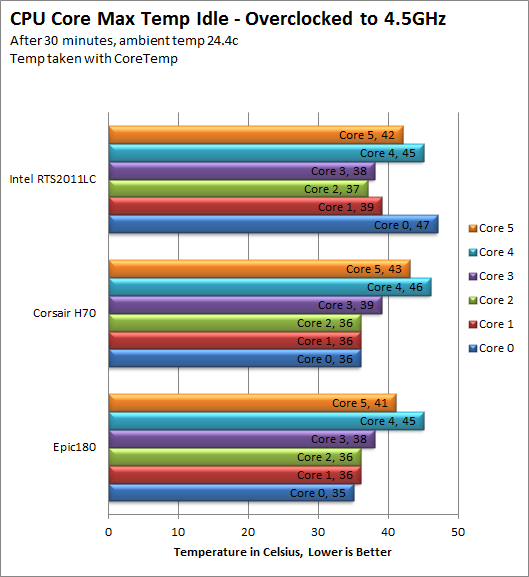 The Epic180 does very well at idle temps keeping the Core i7 3960 cool.
The Epic180 does very well at idle temps keeping the Core i7 3960 cool.
3DMark 11 -
3DMark 11 is the other Futuremark test that we run on our motherboards. This test simulates the typical tasks that a GPU (and system) would have to perform to provide you with a good gaming experience. It is based on the DX9, DX10 and DX11 engines but can only be installed on Windows Vista or later. The suite of tests covers DX9, DX10, and of course DX11 rendering; it also covers AI computations and physics. That’s right I said Physics the latest version of 3DMark uses a Havok physics engine. This removes the advantage that nVidia had with 3DMark Vantage.
HyperPi 0.99b
HyperPi is a front end application that allows you to easily run multiple instances of the SuperPi application. SuperPi, for those that are not familiar with it, is an application that measures the time it takes to calculate the number Pi out to as many as 32 million places. This calculation is then checked and run multiple times (up to 24 for a 32M run). This test stresses the CPU, Memory and HDD as data is handed off between the three. If there is a weak link, HyperPi will show it. For our testing we run the 32M test on as many cores (and threads) as the CPU has available. The slowest CPU time is then recorded.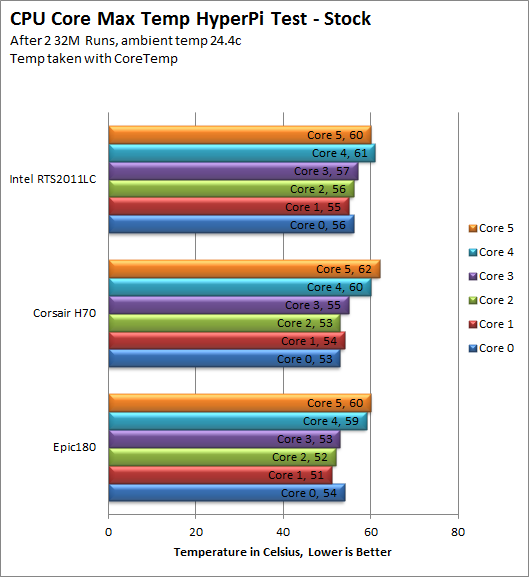
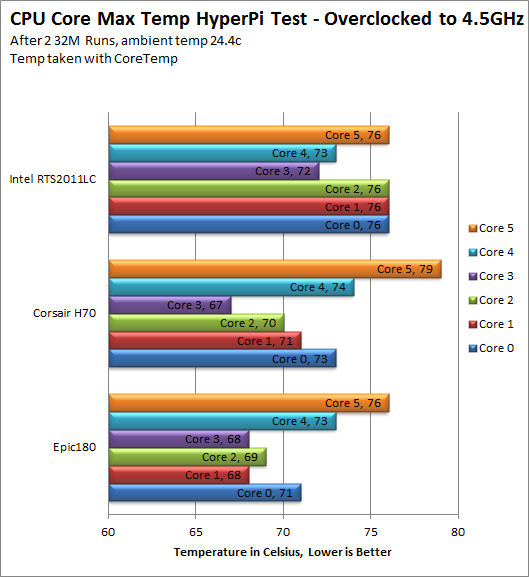
The Epic 180 does well under the stress of HyperPi 0.99b.
Lightwave 3D 9.6 x64
Lightwave is another industry standard application for 3D animation and rendering. It has a large tool base and the rendering engine is highly threaded (when using the right render model). This application is also capable of expanding to 4k resolutions as well as ray tracing for rending the light sources. For our testing we use frame 470 of the Pinball scene found in the LW 9 Content folder. This uses the newer perspective camera that is better suited to a multi-CPU/Core environment. This camera style also uses ray tracing and a much improved anti-aliasing method. Settings are shown below in the attached screen shot. 
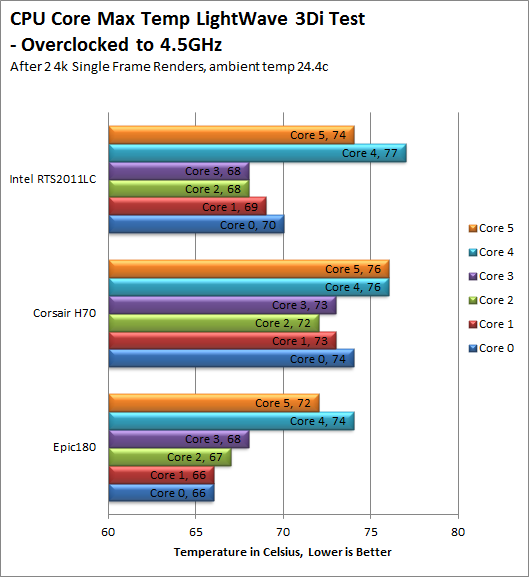
As you can see from the results above the Epic180 comes in a little ahead of the other coolers in this un-optimized setting. When it is inside the Shift Case and combined with the vertical cooling we would expect this cooler to more than outperform others in similar setups. To get the full scoop take a look at our summary video on our YouTube Channel.
{youtube}kBVp1nuawDE{/youtube}
Discuss this in our Forum
Wednesday, 01 February 2012 18:43
MAINGEAR Epic180 Performance Review Part II Featured
Written by Sean KalinichReading time is around minutes.
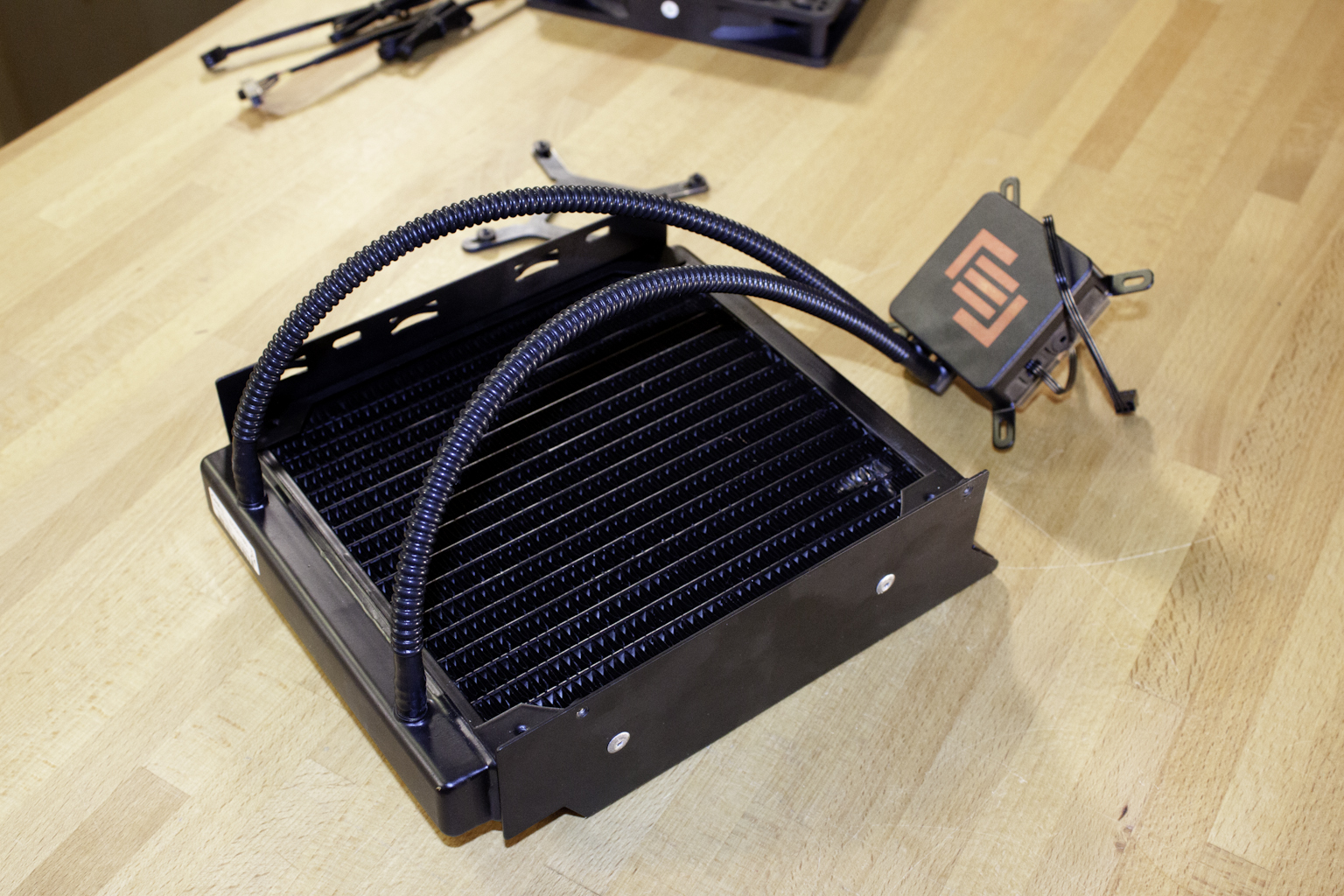 Not all that long ago we talked to you about the MAINGEAR Epic180 water-cooling system. This self-contained unit was built by CoolIT to MAINGEAR’s specifications and intended for use inside their Shift systems (sorry you cannot get one of these unless you buy a MAINGEAR computer). The design of the product take a lot of factors into account and while some of the choices seem very simple, if you look at other products out on the market they might not be so obvious to everyone.
Not all that long ago we talked to you about the MAINGEAR Epic180 water-cooling system. This self-contained unit was built by CoolIT to MAINGEAR’s specifications and intended for use inside their Shift systems (sorry you cannot get one of these unless you buy a MAINGEAR computer). The design of the product take a lot of factors into account and while some of the choices seem very simple, if you look at other products out on the market they might not be so obvious to everyone.
Published in
Enthusiast Peripherals
Tagged under
Latest from Sean Kalinich
- ConnectWise Slash and Grab Flaw Once Again Shows the Value of Input Validation We talk to Huntress About its Impact
- Social Manipulation as a Service – When the Bots on Twitter get their Check marks
- To Release or not to Release a PoC or OST That is the Question
- There was an Important Lesson Learned in the LockBit Takedown and it was Not About Threat Groups
- NetSPI’s Offensive Security Offering Leverages Subject Matter Experts to Enhance Pen Testing
Leave a comment
Make sure you enter all the required information, indicated by an asterisk (*). HTML code is not allowed.
